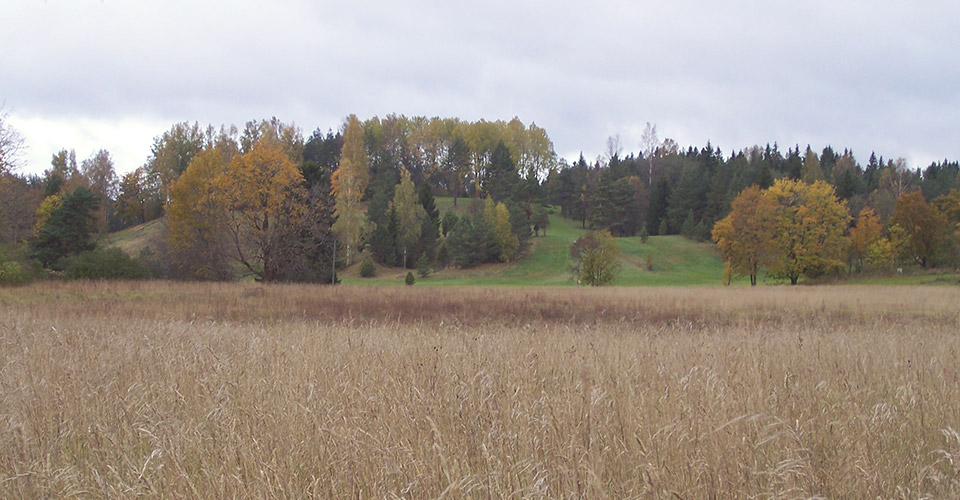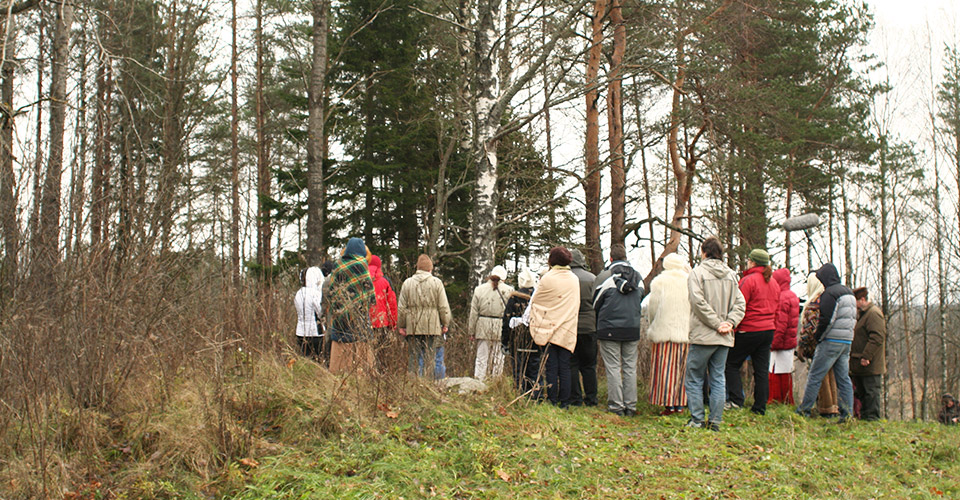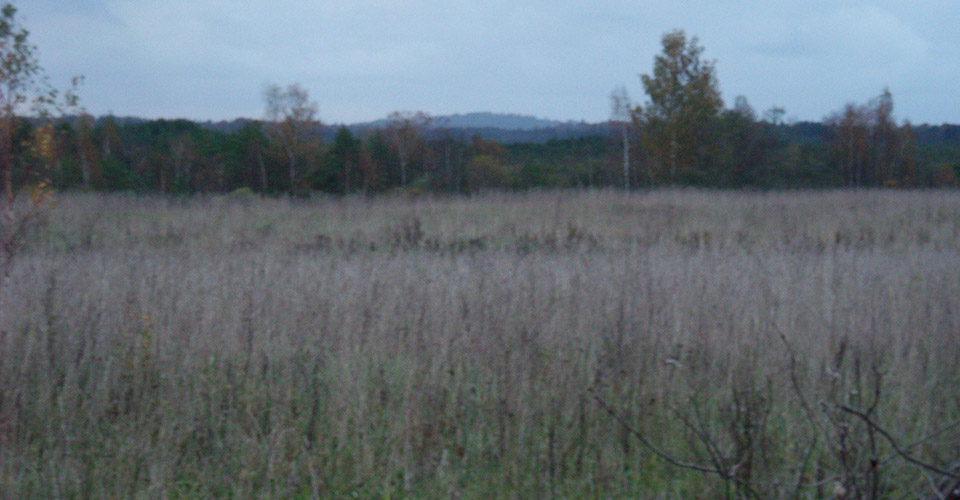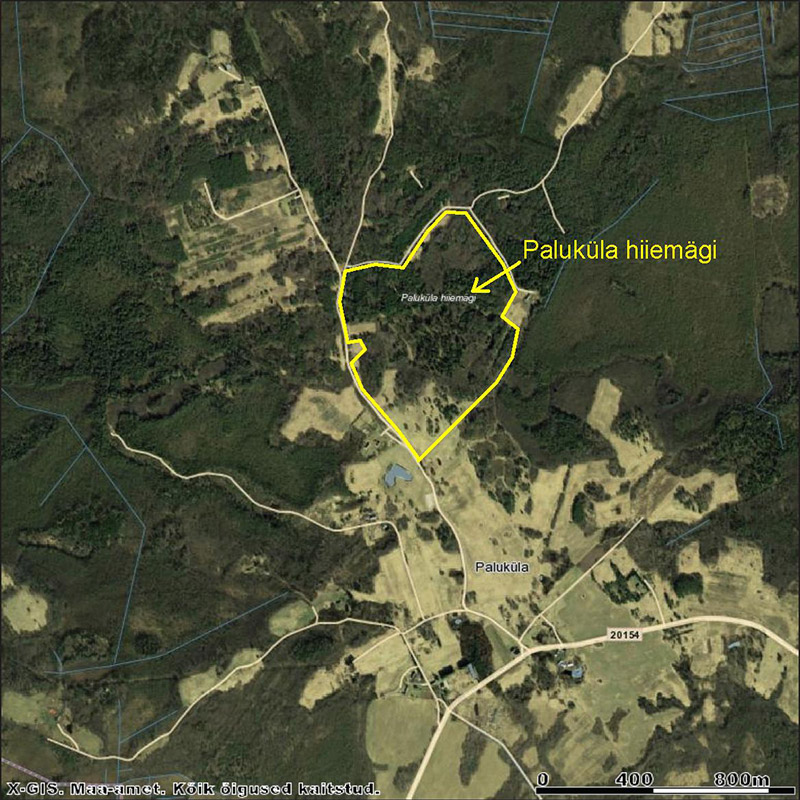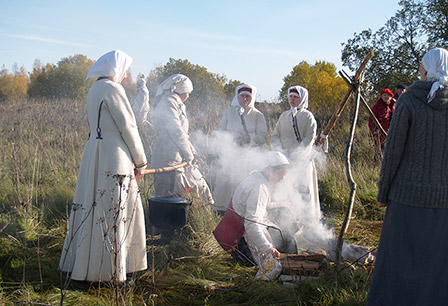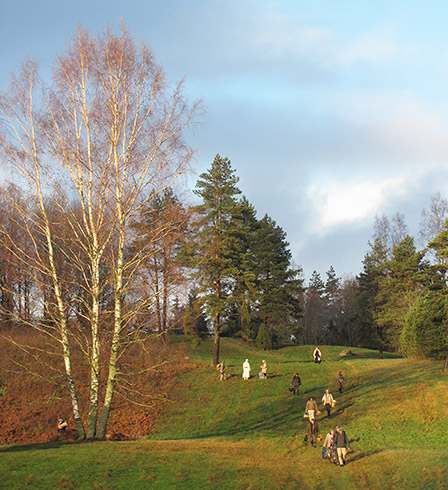តំបន់បណ្តាញ
មុនពេលការសញ្ជ័យនិងគ្រីស្ទាននៃអេស្តូនីដោយជនជាតិអាល្លឺម៉ង់និងដាន់ក្នុងអំឡុងពេលបូជនីយកិច្ចនៅ Livonian ក្នុងសតវត្សរ៍ទី 13, ភូមិក្នុងស្រុកទាំងអស់បានចែករំលែកទីតាំងធម្មជាតិដ៏ពិសិដ្ឋ. កាលបរិច្ឆេទភូមិក្នុងតំបន់ជាច្រើនមានចាប់ពីសម័យកាលនេះហើយដៃគូធម្មជាតិរបស់ពួកគេបានបង្កើតគំរូនៅក្នុងទេសភាព. នៅតំបន់ភូមិអាលូគូឡានៅកណ្តាលអេស្តូនីបង្ហាញពីព្រៃដ៏ពិសិដ្ឋមួយដែលមានឈ្មោះថាHiiemägi ("ទាំងនេះ-ភ្នំ "). ប្រជាជនក្នុងតំបន់ជាច្រើននៅតែអនុវត្តតាម Maausk, មានន័យថាពួកគេថ្វាយបង្គំព្រះធម្មជាតិជាទេវភាព. ពួកគេផ្តល់ការប្រមូលផលដំបូងនៃឆ្នាំដល់ជីដូនជីតាដែលមានទំនាក់ទំនងជាមួយHiiMägiនិងដើមឈើ. ពួកគេក៏អបអរទិវាមើមិនិយមនៅគេហទំព័រនេះដែរ. នេះបើយោងតាមប្រពៃណី, ដើមឈើរបស់វាមិនត្រូវបានកាត់ហើយភ្នំមិនអាចត្រូវបានភ្ជួររាស់ឬរំខានទេ.
បរិស្សានវិទ្យានិងជីវចំរុះ
ភ្នំនេះបង្កើតបានជាផ្នែកមួយនៃតំបន់ទីជលមួយ. វាមានគំនរតូចៗនិងជ្រលងភ្នំតូចៗជាច្រើនហើយជាចំណុចលេចធ្លោបំផុតរបស់ Palukülaបញ្ចប់ Moraine និងវាលKE. ភាគច្រើននៃភ្នំនេះត្រូវបានគ្របដណ្ដប់ដោយព្រៃឈើ. ប្រភេទទីជម្រករបស់ព្រៃរួមមានព្រៃដែលមានភេសជ្ជៈពេស្យាចារហ្វដជាមួយ ភីកាស៊ីនបាន និងលោក Taiga ខាងលិច. របាយការណ៍ចុះបញ្ជីបរិស្ថានអេសណូយបានការពារប្រភេទសត្វបក្សីព្រៃរួមមានឈើដែលគាំទ្រដោយពណ៌ស Dendrocopos leucotos leucotos, ប្រភេទសត្វប្រចៀវនិងប្រជាជននៃស្រមោចឈើក្រហម (polyctena formica formica).
ការគំរាម
អ្នកភូមិស្ទើរតែទាំងអស់និយាយថាភ្នំនេះមានសារៈសំខាន់សម្រាប់ពួកគេប៉ុន្តែមនុស្សមួយចំនួនត្រូវបានបែងចែកដោយឥទ្ធិពលពីខាងក្រៅដូចជាការធ្វើពាណិជ្ជកម្មការប្រើប្រាស់ដីធ្លី, ការកសាងនិងការអភិវឌ្ឍនិងការជ្រៀតជ្រែករបស់សហភាពអឺរ៉ុបដែលអាចកើតមាន. រដ្ឋបាលនៃសាលាក្រុងកេធីណាគ្រោងនឹងសាងសង់កីឡានិងការកំសាន្តនៅលើភ្នំមួយចំហៀង. ប្រទេសជិតខាងភ្លាមៗត្រូវបានរំខានដោយគម្រោងដែលបានស្នើឡើងដែលផ្លាស់ប្តូរជីវិតប្រចាំថ្ងៃរបស់ពួកគេ. នេះបើយោងតាមផែនការលម្អិតលម្អិតរបស់មជ្ឈមណ្ឌល, ការលើកស្គីពីរនិងបំពង់ទឹកសម្រាប់កាណុងបាញ់ព្រិល - ព្រិលនឹងត្រូវការជីក. លើសពីនេះទៀត, អគារម្ភៃម្ភៃ, បូកតំបន់ចតរថយន្ត; បាល់ទះបាល់ទះមួយ, ទីលានវាយកូនបាល់ពីរនាក់និងពហុកីឡដ្ឋានបាល់ទាត់ត្រូវបានគ្រោងទុកនៅជាប់នឹងកន្លែងនោះ, ទាំងអស់នៅក្នុងតំបន់អភិរក្សធម្មជាតិ.
ថែរក្សា
អ្នកដើរតាម Mak គេចបានអនុវត្តពិធីសាសនានិងសហគមន៍ឯកជនជាប្រចាំនៅទីតាំងនោះ. ពួកគេបានការពារតំបន់បណ្ដាញធម្មជាតិដ៏ពិសិដ្ឋតាមប្រពៃណីដោយហាមឃាត់ក្នុងស្រុកនៃឈើនិងការអនុវត្តកសិកម្ម. ពួកគេបន្តគោរពកូនមាន់ដ៏ពិសិដ្ឋហើយអ្នកខ្លះបានបង្កើតឡើង សមាគមដើម្បីការពារភ្នំមហាសមុទ្រPaluküla. សមាគមនេះដើរតួជាអ្នកថែរក្សាភ្នំហើយមានបំណងសិក្សានិងអភិរក្សតំបន់ដ៏ពិសិដ្ឋនិងទំនាក់ទំនងជាមួយអង្គការដទៃទៀត. អង្គការគាំទ្រសម្រាប់សាសនាធម្មជាតិក្នុងស្រុកជនជាតិដើមភាគតិច, នេះផ្ទះអេស្តូនីនៃតារ៉ានិងសាសនាកំណើត'ត្រូវបានចុះបញ្ជីជាអង្គការសាសនា. The សភា "ការពារនិងធ្វើឱ្យប្រសើរឡើងនូវទីតាំងធម្មជាតិដ៏ពិសិដ្ឋទាំងអស់លើអេស្តូនី.
អង្គការទស្រសនៈ
ចលនារបស់អ្នកថែរក្សាកំពុងធ្វើការការពារនិងទទួលបានទីតាំងធម្មជាតិដ៏ពិសិដ្ឋដូចជាHiiMägiពីការកាត់បន្ថយព្រៃឈើនិងផែនការសាងសង់. ទីតាំងធម្មជាតិដ៏ពិសិដ្ឋនៅទូទាំងប្រទេសអេស្តូនីគួរតែត្រូវបានការពារហើយស្ថាប័នដែលទាក់ទងនឹងការគ្រប់គ្រងបេតិកភណ្ឌធម្មជាតិនិងវប្បធម៌ចាំបាច់ត្រូវមានបំពាក់ដើម្បីគាំទ្រដល់កិច្ចខិតខំប្រឹងប្រែងអភិរក្សរបស់អ្នកថែរក្សា។.
កន្លែងពិសេសទាំងនេះ, ដែលជាកន្លែងដែលសកម្មភាពរបស់មនុស្សមិនត្រួតត្រាលើធម្មជាតិ, ការបង្រួបបង្រួមធម្មជាតិនិងមរតកនិងក្នុងពេលតែមួយមានវិមាត្រដ៏ពិសិដ្ឋ. ក្នុងករណីនេះនៃpaluküla, ភ្នំនៅភាគខាងត្បូងនៃតំបន់កំពូលភ្នំអាចត្រូវបានប្រើសម្រាប់ការរអិលក្នុងរដូវរងារសម្រាប់អនាគតដែលអាចមើលឃើញជាមុនបាន, ប៉ុន្តែដោយគ្មានសំណង់សិប្បនិម្មិត. គេហទំព័រនេះអាចធ្វើជាគំរូដ៏រស់រវើកសម្រាប់ការអប់រំធម្មជាតិ, ការណែនាំអំពីការអនុវត្តអភិរក្សវប្បធម៌ដល់ទស្សនិកជនទូលំទូលាយ.
សម្ព័ន្ធ
អ្នកថែរក្សាក្នុងស្រុកបានធ្វើទំនាក់ទំនងជាលើកដំបូងជាមួយផ្ទះអេស្តូនីរបស់តារ៉ានិងសាសនាដើម. អង្គការអាណាឡូកនៅប្រទេសហ្វាំងឡង់ជិតខាង, មេឃក្រចក, បានប្រមូលហត្ថលេខាក្នុងការគាំទ្រលើភ្នំ; ប្រជាជនដែលមានជាតិពុលហ្វូនមានតំបន់ធម្មជាតិដែលពិសិដ្ឋស្រដៀងគ្នានិងប្រពៃណីដែលត្រូវគ្នា. មូលនិធិអេស្តូនីសម្រាប់ធម្មជាតិផ្តល់ដំបូន្មានផ្លូវច្បាប់និងបានចេញសេចក្តីថ្លែងការណ៍ក្នុងការគាំទ្រ. អង្គការមិនមែនរដ្ឋាភិបាលមួយ, អេស្ប៉ាញអេស្ត៉ៃ, រួមបញ្ចូលករណីនៅក្នុងរបស់ពួកគេ សៀវភៅសំភាសន៍ស្តីពីការការពារធម្មជាតិ នៅអេស្តូនី.
ជនជាតិអាមេរិកដើមកំណើត, នៅលើដំណើរទស្សនកិច្ចរបស់ពួកគេទៅកាន់អេស្តូនី, មានពិធីមួយនៅលើទីតាំងនេះក្នុងការគាំទ្រគេហទំព័រធម្មជាតិដ៏ពិសិដ្ឋ. អ្នកជីវវិទូខ្លះ, Progrom Liorist, និងអ្នកបុរាណវិទ្យាគាំទ្រករណីនេះជាមួយនឹងចំណេះដឹងវិជ្ជាជីវៈរបស់ពួកគេ.
សកម្មភាព
នៅថ្ងៃទី 8 ខែវិច្ឆិកា 2004, ក្នុងអំឡុងពេលដែលគេស្គាល់ថា "ពេលវេលារបស់ព្រលឹងអ័ព្ទ", ការប្រមូលផ្តុំប្រជាជននៅលើភ្នំនេះអាចបញ្ឈប់គ្រឿងចក្រឈូសឆាយនិងទាក់ទាញការយកចិត្តទុកដាក់សាធារណៈនិងប្រព័ន្ធផ្សព្វផ្សាយ. ហត្ថលេខាពីទាំងអស់លើអេស្តូនីត្រូវបានប្រមូលសម្រាប់ញត្តិ. អ្នកថែរក្សាក្នុងស្រុកបានផ្តួចផ្តើមរឿងក្តីរបស់តុលាការប្រឆាំងនឹងផែនការដែលមានលក្ខណៈលម្អិតអំពីមជ្ឈមណ្ឌលកីឡារដូវរងារនិងរួមទាំងការលើកមេឃ. លិខិតអនុញ្ញាតសាងសង់ត្រូវបានដកចេញ, ប៉ុន្តែផែនការមិនត្រូវបានគេបំភ្លេចចោលទេ. ករណីនេះឥឡូវនេះស្ថិតនៅក្រោមអំណាចរបស់តុលាការសិទ្ធិមនុស្សអឺរ៉ុប. អ្នកថែរក្សាក្នុងតំបន់បន្តស្វែងរកការអនុញ្ញាតសាងសង់បឋមហើយនៅតែប្រកួតប្រជែងពួកគេនៅពេលចាំបាច់.
ឧបករណ៍អភិរក្ស
ការបកប្រែនៃ 'iCn unesco គេហទំព័រធម្មជាតិដ៏ពិសិដ្ឋដ៏ពិសិដ្ឋ: គោលការណ៍ណែនាំសម្រាប់ការគ្រប់គ្រងតំបន់ការពារទៅជាអេស្តូនីក្នុង 2011 ហើយការណែនាំជាបន្តបន្ទាប់នៃសៀវភៅនៅក្នុងការិយាល័យប្រចាំតំបន់នៃក្រុមប្រឹក្សាបរិស្ថាន, បានបើកដំណើរការគេហទំព័រធម្មជាតិដ៏ពិសិដ្ឋទៅក្នុងគណនីក្នុងដំណើរការរៀបចំផែនការ. ផែនការទូទៅថ្មីនៃសាលាក្រុង Kehtna បានរៀបរាប់ពីទីតាំងធម្មជាតិដ៏ពិសិដ្ឋហើយមិនអនុញ្ញាតឱ្យមានគ្រោះថ្នាក់របស់ពួកគេជាមួយនឹងការសាងសង់ទេ.
ច្បាប់និងគោលនយោបាយ
ហ៊ីមជីជីត្រូវបានការពារថាជាតំបន់អភិរក្សធម្មជាតិរបស់ទីក្រុងណាណូម៉ា 2000 បណ្តាញ. ច្បាប់អេស្តូនីមិនទទួលស្គាល់គេហទំព័រធម្មជាតិដ៏ពិសិដ្ឋទេ, ប៉ុន្តែពិតជាស្គាល់តំបន់បុរាណវិទ្យានិងធម្មជាតិដែលត្រូវបានការពារ. សេចក្តីព្រាងច្បាប់ត្រូវបានសរសេរដោយក្រុមមួយនៅក្នុង សផា, ដើម្បីកែប្រែទាំងការអភិរក្សបេតិកភណ្ឌនិងច្បាប់អភិរក្សធម្មជាតិរបស់អេស្តូនី. គេហទំព័រធម្មជាតិដ៏ពិសិដ្ឋគួរតែត្រូវបានគេមើលឃើញថាជាវិមានពិសេសមួយ, ជាមួយនឹងវិធានដែលត្រូវគ្នានៃការការពារ.
លទ្ធផល
ភ្នំនៅតែដដែល; ព្រៃមិនត្រូវបានកាត់បន្ថយទេ. បានការពារនិងប្រភេទសត្វដទៃទៀតនៅតែរស់នៅក្នុងជម្រករបស់ពួកគេ. ការប្រជុំរបស់ប្រជាជន, តាមប្រពៃណីដើមកំណើតចាស់និងអបអរសាទរថ្ងៃឈប់សម្រាកនៃប្រតិទិនប្រជាប្រិយកើតឡើងម្តងទៀត. អគ្គិភ័យដែលបានធ្វើពិធីសាសនាធ្វើឡើងនៅឯកន្លែងភ្លើងប្រពៃណីហើយអ្នកពាក់ព័ន្ធទាំងអស់កាន់តែខ្លាំងឡើងដល់ភាពពិសិដ្ឋនៃភ្នំមកក្នុងគណនី. អ្នកថែរក្សាឥឡូវនេះមានទំនាក់ទំនងអន្តរជាតិនិងជាតិ ផែនការអភិរក្សនៅលើគេហទំព័រធម្មជាតិដ៏ពិសិដ្ឋ នៅអេស្តូនីឆ្នាំ 2008-2012 ត្រូវបានអនុវត្តមួយផ្នែក. ការងារវាលលើសារពើភ័ណ្ឌនៃគេហទំព័របានចាប់ផ្តើមហើយ.
បេតិកភណ្ឌមាត់, សរសេរពីPalukülaក្នុង 1937:
"ករណីមួយទៀតគឺដើមឈើអាឡឺរ - ដើមឈើជាច្រើនត្រូវបានកាត់បន្ថយពីHiiMägi. វាមានន័យអាក្រក់ពីព្រោះមុនដើមឈើដែលព័ទ្ធជុំវិញដុំថ្មដែលថ្វាយគឺបរិសុទ្ធ. ហើយការព្យាករណ៍បានក្លាយជាការពិត. នៅឆ្នាំនេះមានគោក្របីជាច្រើនបានស្លាប់នៅក្នុងភូមិ។"
- បណ្ណសារប្រជាប្រិយរបស់អេស្តូនីអាយ 5, 723 (2)
- អេស្តូនី. 2008. កន្លែងពិសិដ្ឋធម្មជាតិធម្មជាតិនៃអេស្តូនី. ការស្រាវជ្រាវនិងការផ្ទុក, ផែនការអភិវឌ្ឍន៍នៃវាល 2008-2012. Tallinn. ផែនការដ្ឋានអភិរក្ស "គេហទំព័រធម្មជាតិដ៏ពិសិដ្ឋនៅអេស្តូនី: សិក្សានិងថែទាំ 2008 - 2012"
- ធ្ផេញ, តារា K, សេន, មួយ. 2006. PalukülaHiiMäe Hoiu Seltsing, ក្នុង: បរិស្ថាននិងគំនិតផ្តួចផ្តើមពលរដ្ឋ: សម្ភាសន៍ជាមួយមនុស្សដែលរក្សាគេហដ្ឋានរបស់ពួកគេ (បរិស្ថាននិងគំនិតផ្តួចផ្តើមពលរដ្ឋ: សំភាសន៍) ចលនាបៃតងអេស្តូនី, 2006 ទំព័រ. 25-30.
- ព្រៃ, ៛. និង McLode, គ. (2008) ផាបគេហទំព័រធម្មជាតិពិសិដ្ឋ. គោលការណ៍ណែនាំសម្រាប់ការគ្រប់គ្រងតំបន់ការពារ", គោលការណ៍ណែនាំតំបន់ការពារល្អបំផុតស៊េរីលេខ 13, ក្រពេញ, ប្រទេសស្វីស, អង្គការ IUCN.
- Jonuks, T មាន. 2012. គេហទំព័រ Hiis ក្នុងព្រះសហគមន៍កាតូលិកនៃ Raulta និង Juuru. ទិនានុប្បវត្តិអេស្តូននៃបុរាណវិទ្យា, កាសេតដេលកេបន្ថេម, លេខ. 1, ទំព័រ. 168-183.
- រតចច្ឈញឹកដាលរ័កក្ដោ្មផក់, មួយ. 2011. អភិរក្សតំបន់បណ្ដាញធម្មជាតិដ៏ពិសិដ្ឋនៅអេស្តូនី, ក្នុង: Mallarach, j-m; Papayannis, T មាន. & វីសាសាន់, ៛. (eds ។) ភាពចម្រុះនៃទឹកដីដ៏ពិសិដ្ឋនៅអឺរ៉ុប. កិច្ចដំណើរការនីតិវិធីនៃសិក្ខាសាលាលើកទី 2 នៃគំនិតផ្តួចផ្តើម Dello, 2010. អង្គការ IUCN & ការគ្រប់គ្រងព្រៃឈើ. ហ្វាំងឡង់.
- រហនរៃប, មួយ. ភាពចម្រុះនៃគេហទំព័រធម្មជាតិដ៏ពិសិដ្ឋរបស់អេស្តូនីក្នុងបរិបទគ្រប់គ្រងសហគ្រាសសហសម័យ. អរូបីសម្រាប់សន្និសីទការពារភាពពិសិដ្ឋ: ការទទួលស្គាល់ទីតាំងដ៏ពិសិដ្ឋរបស់ជនជាតិដើមភាគតិចក្នុងការទ្រទ្រង់ធម្មជាតិនិងវប្បធម៌នៅភាគខាងជើងនិងអាក់ទិក Rovaniemi និងPyhä, ហ្វាំងឡង់, 11-13 ខែកញ្ញា 2013.
- សេន, មួយ. 2011. "តើអ្វីជាកន្លែងធម្មជាតិដ៏ពិសិដ្ឋ ហើយហេតុអ្វីបានជាវាសំខាន់សម្រាប់អ្នក?"
- សេន, មួយ. 2012. ផែនការជាតិស្តីពីទីជម្រកធម្មជាតិនៅអេស្តូនី - 2008-2012: បញ្ហាប្រឈមនិងទស្សនវិស័យ, ក្នុង: Mallarach, j-m (ed ។) គោលការណ៍ខាងវិញ្ញាណនៃតំបន់ការពារតំបន់នៃដំណើរការដំណើរការសិក្ខាសាលាអឺរ៉ុប - ISLE នៃ VILM, 2អិន 3 - 6 វិច្ឆិកា 2011. ស្គ្រីប bfn 322 2012, ទំព័រ. 149-155.
- សមាគមដើម្បីការពារភ្នំដ៏ពិសិដ្ឋនៅលើភ្នំដ៏ពិសិដ្ឋនៅPaluküla: http://palukyla.maavald.ee/
- ផ្ទះអេស្តូនីនៃតារ៉ានិងសាសនាកំណើត: http://www.maavald.ee/eng/
- អង្គការមិនមែនរដ្ឋាភិបាលដែលសិក្សាពីទីតាំងធម្មជាតិដ៏ពិសិដ្ឋនៅហ្វាំងឡង់: http://www.taivaannaula.org/in-english/ | http://www.taivaannaula.org/2012/11/palukylan-hiidenmaella/
- ច្រវាក់របស់អេសឃឺរ, វាលស្រែនិងស្គរតូច: http://www.estonica.org/en/Nature/Transitional_Estonia/Chains_of_eskers,_kame_fields_and_small_drumlins
- ការថ្វាយបង្គំជនជាតិឥណ្ឌានិងជនអរសិកម្មដើម: http://tiny.cc/tsxj9w
- សភានៃអេស្តូនី. តំណាងឱ្យតំណាងនិងសហជីព: ក្រុមគាំទ្រទីជម្រកធម្មជាតិ | http://www.riigikogu.ee/index.php?id=34605

